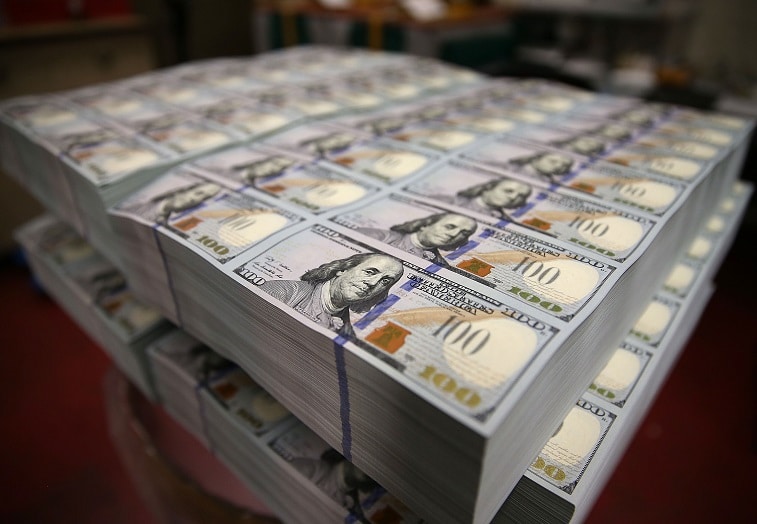While copyrights protect all creative works, including music and literature, a trademark is a word, phrase, symbol, or design that identifies the source of goods and distinguishes them from rival goods. By default, authors own the copyrights to the material they generate. However, trademarks are granted in response to formal requests made by regulatory bodies. Trademark examples include company names and logos. Those who have registered their logo, trademark, or copyright typically utilize legal document drafting software to automate the generation and distribution of the legal documents necessary to complete each step. In this post, we will differentiate between registered trademark, copyright, logo, and patent (Trademark vs Copyright).
Trademark vs Copyright
A trademark protects company logos, but copyright protects artistic works. This is how they differ from one another. They last for different lengths of time and have different application processes. Intellectual property laws govern the preservation, registration, and application of original works and marks.
What Is a Trademark?
A trademark is any term, phrase, symbol, design, or combination of these that distinguishes your goods from those of competitors. The USPTO evaluates trademark applications, performs trademark searches, registers trademarks, and enforces trademark laws. After clearance, owners add a trademark insignia to their legally protected works. A trademark assignment contract is another way they can transfer ownership.
How Long Does a Trademark Last? As long as it is used regularly and is renewed every ten years, a trademark might conceivably live indefinitely.
What Does a Trademark Protect?
A trademark protects logos that a business uses to distinguish itself from competitors in the market. It can relate to a word, name, phrase, logo, or color scheme that has been registered as a trademark. The exclusive right to use a particular mark is granted by trademarks, hence unlawful use of a mark by a third party may be regarded as trademark infringement.
What Is a Copyright?
Copyright defends original artistic creations that have persisted in a specific medium. For example, publications like books, photographs, movies, and video games are covered by protections. They become effective when the owner creates them.
The U.S. Copyright Office (USCO), which also registers copyrights and maintains a database, does basic copyright searches. When a copyright is registered, the owner has the power to use a copyright licensing agreement to grant licenses for works that are copyright protected.
How long does a copyright last? The duration of a copyright is the creator’s lifetime plus an additional 70 years.
What Does a Copyright Protect?
Your unique creative expressions are protected by copyright. It can be applied to dance, writing, music, film, audio, and photography. Copyrights prevent the illegal duplication or commercial use of certain works.
Also, Read Trademarks Vs. Copyrights: Which One Is Right For You?
Do I Need Both a Trademark and Copyright?
The primary distinction between the two is that copyright prohibits copying, reproduction, and distribution of certain works, but a trademark protects the distinctive identity of a brand or product and must be applied for.
Does a Trademark Override Copyright?
No, a trademark does not take precedence over copyright because they protect distinct kinds of works.
How Long Does a Trademark Last?
The normal protection period for a copyrighted work is as long as the author lived plus an additional 70 years.
Trademark vs Copyright vs Patent
Have a brilliant new concept that you’re sure will be profitable? Every inventor and artist should secure a patent, trademark, or copyright from the government before releasing their work for sale. Since each classification only applies to specific types of intellectual property, it is important to understand the differences between the three legal defenses against copycats trying to profit from your idea.
Trademark vs Copyright vs Patent: What Exactly Is a Patent?
Patents are issued by the US Patent and Trademark Office to safeguard original inventions for a certain period of time (USPTO). The absence of competition for the duration of the patent stimulates companies or individuals to continue developing unique new products or services.
Trademark vs Copyright vs Patent: What Exactly Is a Trademark?
In contrast to a patent, a trademark protects the verbiage and design elements that identify the maker of a product. Brand names and corporate names are the most typical examples. A service mark protects the provider of a service rather than a manufacturer of a tangible good, similar to a trademark. Both names are frequently used interchangeably while discussing trademarks.
Trademark vs Copyright vs Patent: What Exactly Is Copyrights?
“Original works of authorship” include items like writings, pieces of art, music, and architectural designs. For as long as the copyright is in effect, only the copyright holder has the right to display, distribute, perform, or license the item. One notable exception is the “fair use” concept, which allows some copyrighted content to be distributed for educational, journalistic, or scholarly purposes.
What Distinguishes a Patent from a Copyright and a Trademark?
New ideas, procedures, or scientific discoveries are protected by patents; brands, logos, and catchphrases are protected by trademarks; and original literary works are protected by copyrights.
Trademark vs Copyright vs Registered
Copyrights, trademarks, and registrations are legal safeguards that can prevent the theft and exploitation of original ideas. Even though they all serve the same purpose, their definitions and usage vary widely.
Trademark vs Copyright vs Registered: Copyright
Copyright safeguards unique literary, dramatic, musical, aesthetic, or intellectual works. Once completed, the original work is instantly protected by the copyright.
A copyright gives the owner the exclusive right to reproduce, produce derivative works, distribute copies, perform, or show the work publicly. It is applicable for both published and unpublished works. It is not required to publish or register with the U.S. Copyright Office, but doing so offers advantages. You can make an original claim for registration of your work to the US Copyright Office by registering online or by filling out “Form CO.”
Trademark vs Copyright vs Registered: Trademarks
Marks that are words, symbols, devices, or names
Trademarks are terms, symbols, devices, or names that are used to distinguish one manufacturer’s or seller’s items from another. A name, symbol, or word is a trademarked product if it bears the TM symbol. The trademark designation notifies third parties that the company owns the name and design of the goods.
This trademark does not, however, protect the company from rival businesses that produce similar goods or use similar names. If this occurred, the original business would need to prove that it came up with the name or design first, but without registration, it might not have a legal defense.
Trademark vs Copyright vs Registered: Registration
The ® symbol denotes a trademark that has been registered. With the aid of a registration, a trademark is protected from unlawful use of the name or symbol by another company. The mark becomes legally and federally registered as a trademark.
Future companies who want to register their own names, logos, or designs must make sure they don’t resemble any trademarks that have previously been registered. If the business makes the image even if it is too similar, it has broken a trademark.
The venue to register trademarks is the U.S. Patent and Trademark Office. You must first check the Trademark Electronic Search System, or TESS, online database, to make sure your mark is not currently in use. Once the distinctiveness of your mark has been proven, file a trademark application and include a sample of the mark. Registration can take some time, and you often don’t hear back from your application for four months. Between years five and six of the ten-year registration, it must be proven that the trademark is still in use.
Also, Read TRADEMARK LAWYER: How to Hire a Licensed Trademark Attorney
Logo Trademark vs Copyright
Since trademarks and logos are very lucrative, there are many dishonest individuals trying to steal from you or violate your distinctive intellectual property. Companies like Apple make significant financial investments to protect their brands. Copyrights, trademarks, or both are the only forms of protection. Starting the process in advance safeguards your ownership rights and, as a result, your capacity to pursue legal action, even if it might take some time for a trademark or copyright to acquire final clearance. If you don’t have a trademark or copyright, you might not be able to sue someone for utilizing your logo without your consent. Here are things to know in comparing logo trademark vs copyright:
Logo Trademark vs Copyright: Using a trademark or copyright
Fundamentally speaking, a trademark protects slogans and logos while a copyright protects creative intellectual designs. The short words that are regularly used in logos are protected by the trademark rather than the copyright. This naturally prompts the query of why a company may demand both in a logo design. If the logo is particularly intricate and a one-of-a-kind work of art, it can be eligible for both trademark and copyright protection.
Trademarks need to be renewed every ten years if they are not in use, with the filing taking place between the ninth and tenth year. When used, trademarks are indestructible. A person’s copyrights are still in effect for 70 years after their death. If 95 years or 120 years have passed since the date of publication, the copyright life for works done for hire expires first.
Logo Trademark vs Copyright: Copyright Application
To request copyright, go to the United States Copyright Office. It is possible to submit applications online. It costs $35 to $55 to register a work for copyright through the online site, or $85 to mail in applications. The application requests information about the creator, the type of work, any pertinent publication details, and the creator’s and any claimant’s contact information. If this is a work for hire, authorization for use and a copy of the creative work are required.
The Copyright Act protects digitally submitted two-and three-dimensional artworks with logos that are uploaded as three-dimensional drawings or vector files. The division of the copyright office that deals with the visual arts handle copyright. Embrace the logo for the application. Trademarks protect the words in a logo, but copyright may also protect the entire graphic design of the logo, including where the words are placed.
Logo Trademark vs Copyright: Trademark Application
The place to register a trademark is with the United States Patent and Trademark Office. Although it usually takes three months for the agency to accept files, it could take up to six months to get clearance. To complete an application and submit it online via the Trademark Electronic Application System, go to the US Patent and Trademark Office website (TEAS). It costs between $225 and $400 to submit a trademark application using the Trademark Electronic Application System. (TEAS). Prices will vary depending on whether the goods and services were already selected from the goods and services ID guide. To narrow down your search for potential conflicts, look in the ID manual’s logo description. This entry costs less since it makes the job of the trademark office simpler.
Also, Read HOW TO TRADEMARK A LOGO: Best US practices, Requirements & What you should know
Is It Better to Trademark or Copyright a Name?
With the use of a trademark, you may stop someone from using your name and emblem for their own purposes. Additionally, you cannot really copyright a name because copyright only covers artistic works.
Is Mickey Mouse a Trademark?
The trademarks for Mickey Mouse are owned by Disney and are used for a variety of commercial purposes.
Is Winnie-The-Pooh Out of Copyright?
Yes, it is!! US copyright laws continue to protect every Winnie the Pooh adaptation and work produced by Disney.
Does a Copyright Expire?
For works created after January 1, 1978, copyright protection typically lasts for the lifetime of the author plus an additional 70 years.
Can You Renew Copyright?
Renewal registration is not necessary for works created on or after January 1, 1978.
FAQ
Is there difference between trademark and copywrights?
The rights of those who produce literary, theatrical, musical, artistic, and specific other intellectual works are generally protected by copyrights. The use of a company’s name, product names, brand identification (such as logos), and slogans is protected by trademarks.
How to trademark and copyright your name
It may take longer than you expect to trademark the name of your firm because the process is more complicated than registering an LLC:
- Search
- apply
- File
copyright brand name check
Before submitting an application, you should check the Trademark Electronic Search System, or TESS, in the USPTO’s trademark database to discover whether any similar marks have previously been registered or submitted.
Related Articles
- Trademarks Vs. Copyrights: Which One Is Right For You?
- HOW TO TRADEMARK A LOGO: Best US practices, Requirements & What you should know
- TRADEMARK LAWYER: How to Hire a Licensed Trademark Attorney
- The Issue of Plagiarism and Copyright Infringement in Business
- How To Trademark a Name: Importance, Tips & All You Need






